** Contact us if you would like to have Guided Reading modeled or a workshop-style session come to your campus! **
Last month I was asked to model a Guided Reading lesson in second grade. I was told the students’ instructional level was L, mostly because of comprehension. For the model lesson I wanted to highlight four main points:
- How the students read the book is important. When students are doing Guided Reading, they should read the entire book. They should not listen to their classmates read aloud. This automatically takes out round-robin reading, Popcorn reading, and any other such system. Students must begin on page one and read the entire book. There are quite a few reasons why, but I think the two most important reasons are, one, that we are trying to raise students reading levels so they must be reading and two, students who are struggling should not be listening to disfluent reading. In order to have all the students reading there are two fairly easy ways to organize students. First, students could all be reading silently or very quietly to themselves. When you want to hear them read aloud, tap in front of them, then, wherever they are in their reading, the student will read a little louder. During this time, the teacher could complete running records or any sort of documentation on the student’s reading. Listen for a short amount of time to each student reading. A second way students can read is in a round, similar to singing in a round. Have one student begin reading out loud quietly. After they get past a page or two, have the next student begin from the beginning, and continue till all students are reading. Again, like in the first system, listen to all the students for a chunk of time to hear how they are reading.
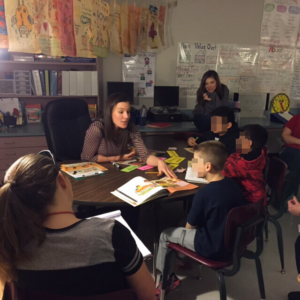
- Book Selection Matters. When I chose a book for the students to read, I didn’t choose just any level L book. It was important to get a book the students could relate to and would be interested in reading. After thinking about second graders in general and reading the information about the students, I chose to have the students read Those Shoes by Maribeth Boelts. This story could easily be tied to a needs and wants social studies lesson and is great for students to make connections to how the characters feel.
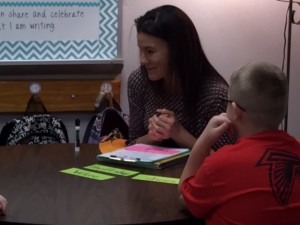
- Introducing the book is key! The students are at an instructional level L, which means they are not fully capable of reading this book without assistance. My job then is to give them tools, to scaffold the book so that they will be successful in reading. Some of this scaffolding will come during the lesson and at the end, but a large part of it will be at the beginning. As I flipped through the book, I asked myself what help the students will need to be successful at reading this book. I pulled out some vocabulary that the students would need to know (“Velcro” and “thrift store”) and the concepts of “needs and wants.” We discussed these words and concepts before we began. Then I chose to concentrate on the feelings of the characters. I provided four words for the students: gloomy, discouraged, proud, and excited. I wrote the words on note cards and we discussed each of the words, gave examples of what each word means, and acted it out. Since this is an L book, I put stopping places in the book. At each stopping point, they had the purpose to explain how the character was feeling. As a group, we took a picture walk. On the picture walk, I prompted students to notice important words in the texts and necessary plot developments in the picture.
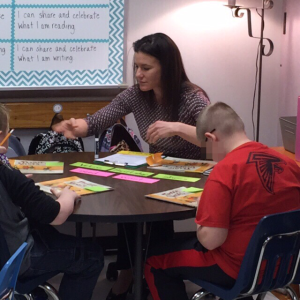
- Focus on simple comprehension only. The purpose of Guided Reading is to improve the student’s reading level. Therefore, complex reading skills and strategies are not taught. Basic comprehension skills are taught and reinforced at the Guided Reading table. In this lesson, I chose to focus on characterization and predictions. When a student got to the first stopping point, they had to explain how Grandma was feeling. Students are reading the text at their own pace, so they all finished at different times. When students arrived at the post-it note, they had to write how Grandmas was feeling. Guess what they all wrote? SAD! Yep, you are not alone, it’s the go-to emotion – either happy or sad. So, I spoke with each student independently. It sounded something like this; “Yes, you’re right. She is sad, can you give me another word?” Most of the students chose gloomy or discouraged because those are the words I provided. Some, however, stepped out and came up with their own! No matter which path they chose, I asked them to tell me why. I made sure they could defend their response with text evidence. Some took more prompting than others, but that provided great formative assessment data for me to give the teachers.

The students were successful in reading this book and were guided to understand and pay attention to characters on a deeper level than if they were reading alone. An added bonus was that they LOVED the book.
What do you think is most important when teaching Guided Reading?

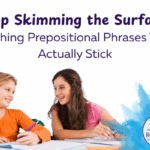

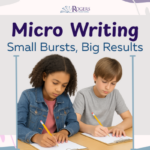
This is very helpful! One thing I struggle with is making sure they are engaged the entire time. With the tips you have, I feel I will be more successful.
Excellent! Please let me know if you need any help!